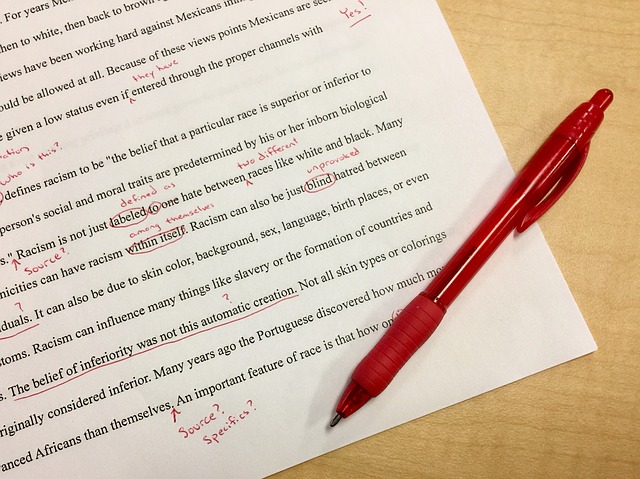Linguistic prejudice: Towards more inclusive editing and proofreading practices

I recently wrote a CIEP blog post discussing linguistic bias and prejudice, and encouraging editors and proofreaders to reflect on our roles and how our own biases may influence our working practices. In the post, I also highlighted what I consider to be problematic discourse within the profession, which is often reflective of the wider public discourse around language use. As a follow-up, this blog post provides more concrete – and, in many ways, more subtle – examples of linguistic bias and prejudice.
It’s one thing to accept that linguistic bias exists within the editing and proofreading profession and quite another to identify how it manifests itself and the ways in which we might work to prevent it. Once we start checking for unconscious biases in our daily practice, we come to realise that there are no simple do’s and don’ts. But, in my own experience of editing and proofreading (and having my work edited and proofread), I’ve become mindful of various ways in which we might be able to carry out our work in a more sensitive, inclusive and representative fashion.
1. Do encourage the use of sensitive and inclusive language but check that suggestions align with the author’s intention.
By means of example, a proofreader changed every instance of ‘sex’ to ‘gender’ in one of my research papers and, despite being well-intentioned, this change misrepresented which of these factors I’d investigated and how I’d gone about my research.
2. Do respect people’s rights to self-identify and to identify others in a more inclusive manner.
This applies to every aspect of identity but a useful example is that of singular they/them/their used for unknown or non-binary gender identifications. Singular they/them/their has become increasingly common and accepted in usage, especially for generic or indefinite antecedents, and the pronouns have worked to replace he/him/his, often the traditional choices in ‘gender-neutral’ instances. Recent moves have seen singular they/them/their used in a specific and definite sense. Ackerman (2018) writes:
there is prescriptive stigma of they as being necessarily plural … (although this appears to be changing) … this bias feeds the stigma of singular they as a personal pronoun for people who identify as neither male nor female, but instead as nonbinary. I advocate extreme care in using “unacceptable,” … This terminology puts authors in the position of telling nonbinary … readers … that the terminology which the nonbinary community has converged on is unacceptable
For discussion of singular they in editing and proofreading, see this article from The Economist.
3. Do retain regional and non-standard linguistic differences, rather than replacing them with more widespread or standard forms.
A good example of this is the primarily Scottish term ‘outwith’, frequently replaced in academic and other formal types of writing, despite the fact that, as stated in this Twitter thread, ‘it is the opposite of within in a way that without is not’.
4. Do acknowledge variation and remain flexible – opting for consistency rather than imposing rules.
By means of example, while the Modern Humanities Research Association suggests that the possessive of ‘Jesus’ is ‘Jesus’s’, Scientific Style and Format recommends writing it as ‘Jesus’’. This is not to mention the controversy around the use of the Oxford comma or the use of split infinitives, which also vary according to institutional and personal style. The choices that writers make regarding each of these linguistic features will inevitably communicate social meanings (I, for one, have either used or avoided the Oxford comma to achieve different effects), but writers should be entitled to make those choices themselves.

5. Do respect and nurture the author’s style, voice and identity.
If the author chooses to begin a sentence with a conjunction or end with a preposition, perhaps they want to take a more casual and informal stance to their topic. If, as I often encourage in academic writing, they choose to use a first-person pronoun rather than referring to themselves as ‘the author’ or ‘the researcher’, perhaps they want to assert themselves and claim more ownership over what they’re writing.
6. Do remember that the role of the editor or proofreader is to manage the author’s intentions and the reader’s expectations.
For example, dialect literature serves to celebrate regional and social differences and is intended for readers with sufficient social and cultural knowledge to recognise its forms and its authenticity. As such, non-standard spelling and grammar are not only preferable but, arguably, essential in this sphere – consider, for example, DH Lawrence’s use of third-person singular, past-tense ‘were’ in The Collier’s Wife (my emphasis):
Wheer’s ‘e hurt this time, lad?
– I dunna know
They on’y towd me it wor bad –
It would be so!
Compare this intentional use of non-standard spelling and grammar, where the message is communicated effectively, to Donald Trump’s ‘covfefe’ blunder, where the non-standard spelling was neither intended by him nor expected of someone in the position of POTUS.
In summary, our writing is an expression of who we are. For some writers, it is what makes their work different that makes it so special, authentic and credible (eg dialect literature). Even in other cases, there are nuances to writing styles that go beyond the textual meanings and that communicate social meanings and crucial aspects of the authors’ or characters’ identities. When we edit out these meanings, we risk editing out their voices altogether.

Photo credits: João Jesus from Pexels on canva pro
Proofread by Emma Easy, Entry-Level Member.
The views expressed here do not necessarily reflect those of the CIEP.
